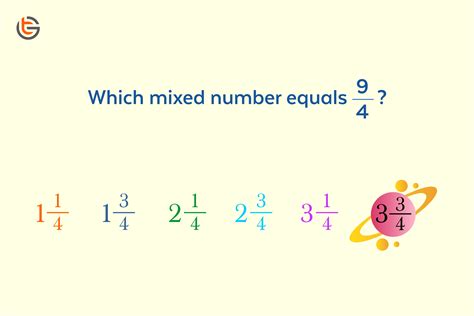What Is 8/5 As A Mixed Number
listenit
Apr 02, 2025 · 4 min read

Table of Contents
What is 8/5 as a Mixed Number? A Comprehensive Guide
Converting improper fractions, like 8/5, into mixed numbers is a fundamental skill in arithmetic. This seemingly simple process underpins a deeper understanding of fractions and their relationship to whole numbers. This guide will not only show you how to convert 8/5 to a mixed number but will also explore the underlying concepts, provide practice problems, and offer advanced insights into working with fractions.
Understanding Fractions and Mixed Numbers
Before diving into the conversion, let's solidify our understanding of the core components.
Fractions: A fraction represents a part of a whole. It consists of two parts: the numerator (the top number) and the denominator (the bottom number). The numerator indicates how many parts we have, while the denominator indicates how many equal parts the whole is divided into.
Improper Fractions: An improper fraction is one where the numerator is greater than or equal to the denominator. For example, 8/5 is an improper fraction because 8 (numerator) is greater than 5 (denominator). This means we have more than one whole.
Mixed Numbers: A mixed number combines a whole number and a proper fraction. A proper fraction is one where the numerator is less than the denominator (e.g., 1/2, 3/4). Mixed numbers provide a more intuitive way to represent quantities greater than one.
Converting 8/5 to a Mixed Number: The Step-by-Step Process
The conversion of 8/5 to a mixed number involves dividing the numerator by the denominator.
Step 1: Divide the Numerator by the Denominator
Divide 8 (numerator) by 5 (denominator): 8 ÷ 5 = 1 with a remainder of 3.
Step 2: Identify the Whole Number
The quotient (the result of the division) becomes the whole number part of the mixed number. In this case, the quotient is 1.
Step 3: Determine the Fractional Part
The remainder becomes the numerator of the fractional part of the mixed number. The denominator remains the same as the original fraction. The remainder is 3, and the denominator is 5, giving us the fraction 3/5.
Step 4: Combine the Whole Number and Fractional Part
Combine the whole number (1) and the fraction (3/5) to form the mixed number: 1 3/5
Therefore, 8/5 as a mixed number is 1 3/5.
Visualizing the Conversion
Imagine you have 8 slices of pizza, and each pizza is cut into 5 slices. You can make one whole pizza (5 slices) and have 3 slices remaining. This visually represents the mixed number 1 3/5.
Practice Problems: Converting Improper Fractions to Mixed Numbers
Let's solidify your understanding with some practice problems:
- Convert 11/4 to a mixed number.
- Express 17/6 as a mixed number.
- What is 23/8 as a mixed number?
- Convert 9/2 to a mixed number.
- Express 25/7 as a mixed number.
Solutions:
- 11 ÷ 4 = 2 with a remainder of 3. Therefore, 11/4 = 2 3/4
- 17 ÷ 6 = 2 with a remainder of 5. Therefore, 17/6 = 2 5/6
- 23 ÷ 8 = 2 with a remainder of 7. Therefore, 23/8 = 2 7/8
- 9 ÷ 2 = 4 with a remainder of 1. Therefore, 9/2 = 4 1/2
- 25 ÷ 7 = 3 with a remainder of 4. Therefore, 25/7 = 3 4/7
Converting Mixed Numbers to Improper Fractions: The Reverse Process
It's equally important to understand how to convert a mixed number back into an improper fraction. This is often necessary in more complex mathematical operations.
Let's use the example of 1 3/5.
Step 1: Multiply the Whole Number by the Denominator
Multiply the whole number (1) by the denominator (5): 1 x 5 = 5
Step 2: Add the Numerator
Add the result from Step 1 to the numerator (3): 5 + 3 = 8
Step 3: Keep the Denominator
The denominator remains the same (5).
Step 4: Form the Improper Fraction
Combine the result from Step 2 (8) as the numerator and the denominator (5) to form the improper fraction: 8/5
Advanced Concepts and Applications
Understanding fractions and mixed numbers is crucial for various mathematical applications, including:
- Algebra: Solving equations involving fractions and mixed numbers.
- Geometry: Calculating areas, volumes, and other geometric properties.
- Calculus: Working with derivatives and integrals involving fractional expressions.
- Real-world applications: Measuring ingredients in cooking, calculating distances, and many other everyday tasks.
Troubleshooting Common Mistakes
- Incorrect division: Double-check your division when converting improper fractions to mixed numbers.
- Incorrect addition/subtraction: Be careful when adding or subtracting the numerator and the whole number when converting mixed numbers to improper fractions.
- Forgetting the denominator: Remember that the denominator remains the same throughout the conversion process.
Conclusion: Mastering Fractions for Mathematical Proficiency
Converting 8/5 to the mixed number 1 3/5 is a fundamental step in understanding fractions. This seemingly simple conversion lays the groundwork for more complex mathematical operations. By mastering these fundamental concepts and practicing regularly, you'll build a strong foundation in arithmetic and enhance your overall mathematical proficiency. Remember to practice consistently, utilize visual aids when necessary, and don't hesitate to seek clarification when needed. With dedicated effort, you'll confidently navigate the world of fractions and mixed numbers.
Latest Posts
Latest Posts
-
2 3 Or 3 4 Bigger
Apr 03, 2025
-
Friction Is A Non Conservative Force
Apr 03, 2025
-
What Percent Of 27 Is 18
Apr 03, 2025
-
Whats The Square Root Of 500
Apr 03, 2025
-
How Many Feet Is 1 2 Miles
Apr 03, 2025
Related Post
Thank you for visiting our website which covers about What Is 8/5 As A Mixed Number . We hope the information provided has been useful to you. Feel free to contact us if you have any questions or need further assistance. See you next time and don't miss to bookmark.
